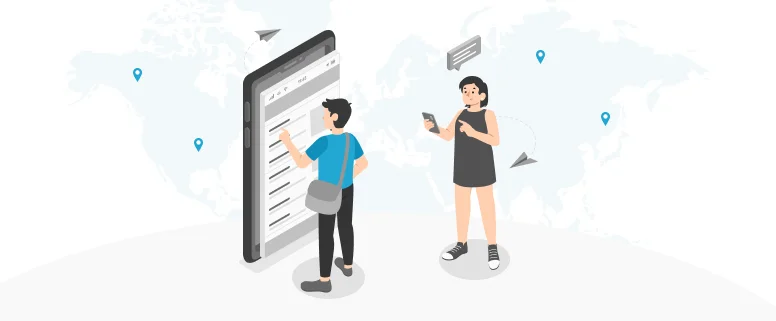There are outstanding features in engineering translation such as greater professionalism, a wide range of field involved and large projects, etc. It is recognized as a field always with large projects in the translation industry.
You will encounter not only professional construction terms but also professional translation involved legal aspects (like the tender invitation/tender), and mechanical aspects (like installation and operation instructions for large equipments), and in other fields, such as animal husbandry and environmental protection, etc. All of these need a combination of multi-field professional knowledge to well complete the translation of each project.
In terms of the translation objectives, there are contract translation, tender/ tender invitation translation, construction book translation, construction paper translation, equipment manual (instruction book) translation, the construction drawings translation, construction technology document translation, construction conference and meeting minute’s translation etc.
While, base on the engineering industry segments, there are railway engineering translation, road engineering translation, water conservancy engineering translation, sports facility construction translation, environmental engineering construction translation, the airport project construction translation, highway construction translation, bridge & tunnel construction translation, power plant construction translation, wharf construction translation, civil engineering translation, amusement venues construction translation, underground civil defense engineering translation, etc.
Read Also: Case Study: Good User Manual Translation in Electronic Industry
Therefore, no matter which angle of view you take, engineering translation is a very professional and complex task.
First, you should learn engineering professional terms, including those in your mother tongue or in the target languages. Because of its great profession, for many terms concerned, even they are in your own mother tongue you also can’t understand quickly. By this time, one of the best ways perhaps is to get some engineers to ask.
Because there are so many professional engineering books, even a person majored in engineering can not necessarily read them all. So, when you meet professional engineering questions, the most simple and effective way is to ask the field engineers. In addition, regarding to the professional terms, you can collect some professional engineering specification or standards.
Some professional terms and their corresponding English have been defined in these documents. And just because they are “standards”, those professional engineers abide by them, so do us. The Ministry of Communications, Ministry of Water Resources and Ministry of Construction have all promulgated several standards of technical terms.
In addition, there is a very useful professional tool – A Practical English-Chinese and Chinese-English Civil Engineering Vocabulary and Terminology published by the China Communications Press.
With these, then you can start to the second step, which is to read professional books. As mentioned above, there are a lot of engineering books, but you can choose to read some of those representative books first, for example, a set of highway project drawings.
Most of professional books are similar in frame and basic contents, although there are many. Once you have read a set of drawings, you won’t feel strange for another one. Additional, still can see some engineering specifications in the target language. Here I have some English specifications from US. If need, contact me.
The third point I think is what relating to your own professional translations. Engineering translation also belongs to the large category of science and technology translation. When mentioned with science and technology translation, I am sure you have got something in your mind.
For example, in science and technology papers of English, there are many passive sentences, long sentences, rigorous words, and sentences being in the standard pattern and grammar. At this time, you can accumulate some sentence pattern for the time when you are in need. Such as “Care shall be taken…”, “… is to be done…”,“As per…”, there are a lot of formatting sentences like these.
Fourthly, I’d like to say is that, engineering translation must be practical and realistic. Construction projects are general with high cost. It may suffer a great loss if you did not translate correctly. In many sentences, there appear very long clauses, such as “before…”. And what on earth is the word “before” be translated to? Does it mean “earlier than the time” or “until the time”?
eg. See me before you leave.(English)
在你离开之前来见我(Chinese)
It will be a long time before we finish this dictionary. (English)
要过很长时间后我们能把这部词典编译完。(Chinese)
If you understand Chinese, you can tell the difference. In the first sentence, we use “前”,which means “earlier”, but in the second sentence, we use “后”, that means “later”. The difference is that in these sentences, you should indentify which part is earlier and which part is later, then you can choose the words according to the definite language customs. Of course, the two sentences I picked here are easy to identify, but, as we know, the case is not the same in those technological passages.
Can you be sure that you can always tell it in those long sentences? So, if you have such a sentence, you should be very careful. And if you do not understand or you are not certain about that, you should go to find site engineers for confirmation. When this kind of sentence appeared in the engineering documents, it generally relates to the construction procedures.
Once your translation is incorrect, the construction procedure is wrong. If there is an experienced engineer on the site, he can discover in time. But for some engineering and technical personnel with little experiences, drawing is the instruction. Because that all the construction activities should comply with the design drawings.
Here, I’d like to add some more words: in engineering construction there are generally three key instructions, that is the construction contract, design drawings and specifications. As long as you keep the three things, you basically won’t make mistakes.
I used to work in the engineering filed as a translator and auxiliary management staff. With years of experience in the construction site, now I have joined in a professional translation company – CCJK. It is here I met many elites from various industries, such as IT, Mechanism, Technology, Finance, Economics, Tourism, Healthcare, logistics and so on, who are very talented in the language translation with many years of experiences.
If you have any problems with respect to languages, please contact us. I will post the contact methods below. In addition, we can provide you with some free consultation services.
Well, for the time being, stop here.
Sincerely wish you a Happy New Year, family peace, and all the best!
Contact us, via:
China Office
CCJK Technologies Co., Ltd.
Shen Zhen
Rm 902, JiaDa Building, No. 5 SongPingShan Road, High-Tech Industrial Park (N),
Nanshan District, Shenzhen 518057 China
Tel:+86-755-8611-7878
Fax:+86-755-8611-7978
Chang Sha
Rm 1903, Block A, South Tower, 202 Building, No. 882 Wuyi Avenue, Kaifu District, Changsha, Hunan 410005, P. R. China
Tel:+86-731-8386-9978
Fax:+86-731-8273-0725
E-mail:[email protected]
Web: https://www.ccjk.com
HongKong Office
CCJK Technologies Co., Limited.
Rooms 1318-20, 13/F, Hollywood Plaza, 610 Nathan Road, Mong-kok, Kowloon, Hong Kong
Tel:+852-2139-5786
E-mail:[email protected]









